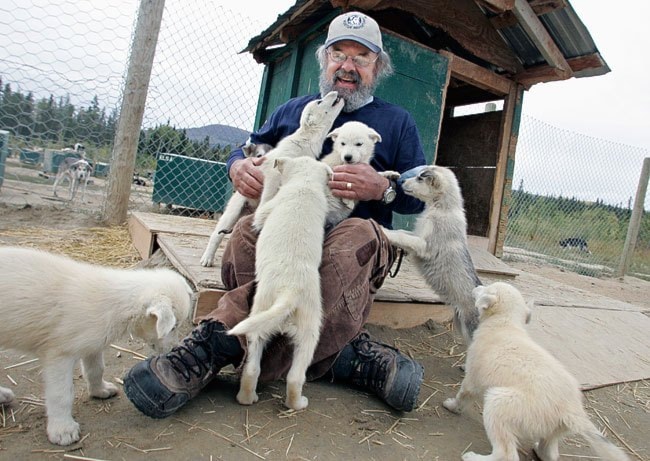Penis warmers are part of a new code of practice to protect B.C.‘s sled dogs, thanks to input from a Yukon musher.
Longtime Quest veteran and local tourism operator Frank Turner was on the task force that established the new recommendations and regulations, following the mass slaughter of 100 healthy sled dogs in Whistler in 2010.
Now, Turner would like to see similar regulations established in the Yukon.
“I would like to see certification of all commercial and racing kennels,” he said.
The new regulations cover sled dogs’ weight, housing, tethering, socialization, grooming and exercise.
“And these standards will hold up in court,” said Turner.
The regulations also cover “killing sled dogs.”
Sled dog operators can’t kill their dogs unless the animal is “in critical distress” or the operator “has made reasonable efforts to re-home the sled dog, but those efforts have been unsuccessful,” according to the Sled Dog Standards of Care Regulations.
Page 51 of the accompanying Sled Dog Code of Practice even has a diagram illustrating the optimal angle to hold a gun in order to lodge a bullet in a dog’s brain and another image showing where to shoot - between the eyes.
“So what has changed?” said Vancouver Humane Society communications director Peter Fricker.
“The new regulations are basically describing the exact situation the Whistler (operator) found themselves in,” he said.
“They couldn’t find homes for the dogs so they killed them.”
Still, the new code of conduct should be a helpful guide for people considering sled dogs, said BC SPCA cruelty officer Marcie Moriarty, who sat on the task force with Turner.
There are plenty of good recommendations in the code of conduct, including vaccine requirements, records of births and deaths, life-cycle plans and letting dogs off their tethers at least once every 24 hours so they can socialize.
Moriarty would like to see tethers scrapped altogether. She’d rather see dogs kept in pens where they can cuddle and play instead.
Here, Turner disagrees.
“Some of the (people on the task force) had not been to large well-run kennels where the dogs are happy and well adjusted,” he said.
The majority of Turner’s dogs are on tethers.
“And not every dog gets off every 24 or 48 hours,” he said. “But when they do get off, they run around and are well socialized.”
But tethers are not Moriarty’s main concern.
The new regulations and recommendations could have a lot of teeth, she said.
“But they need to be enforced.”
And the BC SPCA is cash-strapped.
“The government is not giving us any money for enforcement,” said Moriarty. “They’ve made regulating the industry impossible for the SPCA.”
Enforcement is “the teeth,” said Turner. “It’s really disappointing.”
Still, he’d like to see similar regulations in the territory.
The Yukon remains a hinterland in many ways, said Turner. “And there are some totally unacceptable situations here.”
The Yukon government spends a lot of money on tourism, and sled dogs are part of that, he said.
“If we are going to provide world-class experiences for people, we need to adhere to high standards and values.”
Turner is going to push the new sled dog regulations at the next Wilderness Tourism Association of the Yukon meeting.
“I hope we can have a discussion about this,” he said.
“But (the regulations) would need enforcement attached for them to have any credibility.”
Contact Genesee Keevil at
gkeevil@yukon-news.com.
